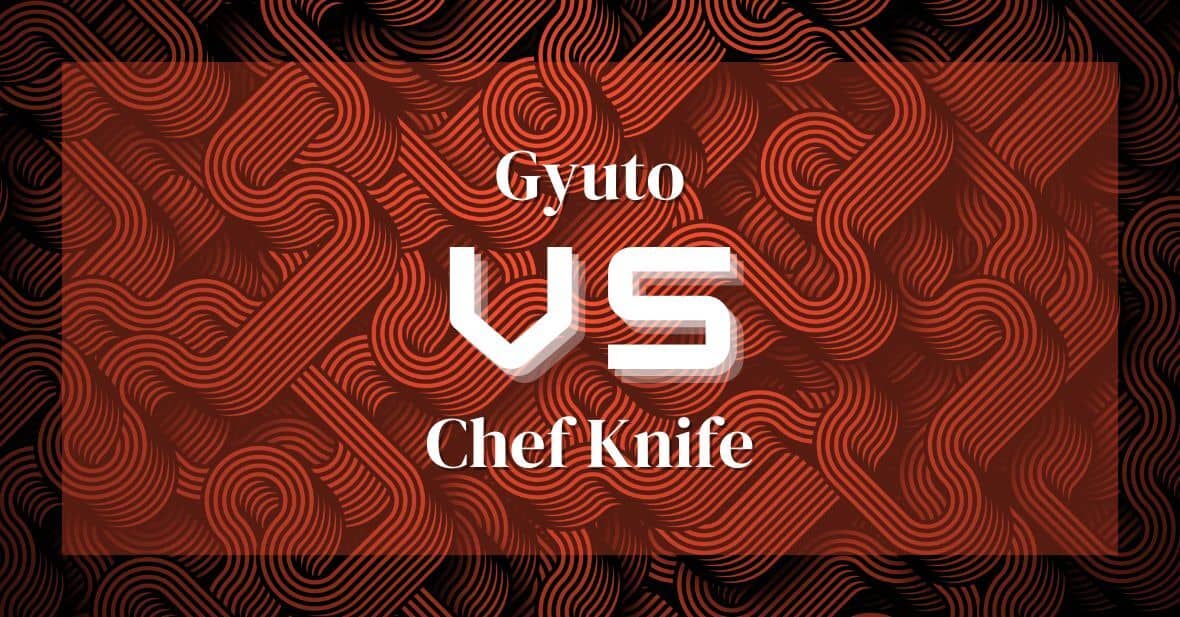Yanagiba vs Sujihiki: Unraveling the Art of Slicing Fish
Are you looking for the perfect knife to add to your collection? You’ve heard of yanagiba and sujihiki, but don’t know much about them – which one is right for you? Let us help you decide! We’ll take a look at the design and construction, blade length and shape, cutting performance, maintenance and care, and best uses for each knife. So put on your thinking cap and read on – by the end of this article you’ll be an expert in no time!
Design and Construction
When it comes to design and construction, there’s more than meets the eye – so let’s take a closer look!
A yanagiba and sujihiki knife have some similar features, but there are also key differences. The blade of each is made from high carbon steel for superior edge retention.
Yanagibas often have a single bevel grind, which makes them ideal for sushi preparation. On the other hand, sujihikis feature a double bevel grind that makes them suitable for slicing proteins as well as vegetables.
In addition, their handle designs differ significantly too: yanagiba handles are usually octagonal-shaped while sujihiki handles tend to be either rounded or oval-shaped for comfort and control when cutting.
So when comparing yanagiba vs sujihiki knives in terms of design and construction, there are some important differences that you should keep in mind!
Blade Length and Shape
You know the difference between a yanagiba and a sujihiki, but do you know how their lengths and shapes differ?
A yanagiba is typically longer than a sujihiki, with an average length of 270mm compared to 240mm. The blade shape of the yanagiba is also more curved than that of the sujihiki, which has a straighter edge. This difference in shape affects the cutting angle and edge sharpness:
The curved blade of the yanagiba allows for a sharper cutting angle when slicing through food. This sharper cutting angle results in greater edge sharpness when using a yanagiba compared to a sujihiki.
On the other hand, the straighter blade of the sujihiki provides less resistance when slicing through food. However, this also means that it produces less edge sharpness than its counterpart.
So, while both knives are great for different tasks in your kitchen, understanding their differences can help you choose which one is best suited for your needs!
Cutting Performance
Comparing the cutting performance of a yanagiba and sujihiki, you’ll find that the former’s sharper angle and greater edge sharpness make it ideal for precision slicing, while the latter’s straighter blade provides less resistance when cutting through food. Sharpness testing has shown that a yanagiba can retain its edge longer than a sujihiki due to its higher degree of sharpness. This means that if you’re looking for accuracy in your cuts, then it might be better to go with a yanagiba as opposed to a sujihiki.
The table below compares the cutting performance of these two knives:
| Yanagiba | Sujihiki | |
|---|---|---|
| Sharpness | High Edge Retention | Medium Edge Retention |
| Resistance | Low Resistance | Higher Resistance |
| Precision Slicing | Ideal Choice | Not Ideal Choice |
| Overall Cutting Performance | Excellent Performance | Good Performance |
Maintenance and Care
Keeping your yanagiba and sujihiki in top condition requires regular maintenance and care. With the right attention, you can ensure these knives remain sharp and ready to use for years to come.
Cleaning your knife after each use is paramount to maintain its integrity – so make sure you’re using the correct cleaning techniques. For a yanagiba or a sujihiki, warm water with mild detergent is best – no scrubbing required! After washing, dry your knife off immediately with a clean cloth.
It’s also important to store them properly when not in use: consider investing in a quality knife block or magnetic holder to keep your blades safe from accidental nicks and scratches.
Taking these simple steps will help protect your investment and keep it looking as good as new!
Best Uses for Each Knife
Discovering the best uses for a yanagiba and sujihiki can help you get the most out of your knives and make sure they’re always ready to use.
A yanagiba is traditionally used in sushi preparation, slicing fish with a single long stroke. Although this knife can be used for other tasks, it’s important to observe table etiquette when using it, as the blade is quite long.
Sujihikis, on the other hand, are ideal for cutting thinner slices of meat or vegetables due to their shorter blades.
Both types of knives need regular sharpening with methods appropriate for the steel type they’re made from in order to keep them at optimal performance.
With proper care and maintenance, you’ll have two reliable knives that can handle whatever cooking task you put them up against!
Conclusion
You can’t go wrong with either a Yanagiba or Sujihiki knife. Both are incredibly sharp, well-crafted blades that will help you easily tackle the toughest of tasks.
While they share many similarities, their differences make them ideal for different tasks. The Yanagiba is great for slicing sushi, while the Sujihiki is more adept at slicing thin cuts of meat and fish.
Amazingly, the average edge retention on a Sujihiki blade can last up to five times longer than a Yanagiba!
No matter which type of knife you choose, it’s sure to be an asset in your kitchen.
Frequently Asked Questions
What Is The Difference In Price Between A Yanagiba And A Sujihiki?
You’re in luck: the difference in price between a yanagiba and a sujihiki is about as night and day.
Both knives are essential for sushi making, but one costs an arm and a leg while the other won’t break the bank.
If you want to hit all your sushi making tips with ease, go for the yanagiba – it’s worth every penny.
But if you’re looking to save some cash without sacrificing quality knife care tips, then a sujihiki will do just fine.
Don’t let the prices fool you – both of these blades are sure to help you whip up delicious dishes in no time!
What Are The Best Type Of Woods To Use For The Handles?
When choosing the right type of wood for your handle, you should consider both its hardness and shape. The most popular woods used to make handles are ebony, rosewood, and ironwood because they’re all incredibly hard materials that’ll last a long time.
However, if you’re looking for something with more character, then maple or walnut may be better choices. These woods have unique patterns and colors that’ll give your handle a one-of-a-kind look. Plus, their softer texture makes them easy to grip and comfortable to use!
So when picking out the perfect wood for your handle, think about how it looks as well as how it feels in your hand!
How Do You Sharpen A Yanagiba Or Sujihiki?
Sharpening a yanagiba or sujihiki is an art form that requires patience and precision. You’ll need to arm yourself with the right tools, such as sharpening stones and honing angles, to get the job done.
To start, you’ll want to create a shallow angle on your blade by using a coarse stone. Then, use a finer stone to refine the edge of your blade until it’s razor-sharp.
It may take some practice before you master this skill, but don’t worry – with enough dedication and determination, you can become an expert in no time!
What Is The Best Way To Store A Yanagiba Or Sujihiki?
Storing your blades is just as important as cleaning and maintaining them. To keep your knives in tip-top shape, you should always make sure to store them properly.
Whether it’s a yanagiba or sujihiki, the best way to store them is on a magnetic knife rack. This will protect the blade from being damaged due to other kitchen utensils coming into contact with it. Plus, having easy access to your knife will make cooking and cleaning up much easier!
So don’t forget about those essential cleaning tips and blade maintenance – store your knives safely and correctly for long-term use!
Are There Any Special Techniques For Using A Yanagiba Or Sujihiki?
Using a yanagiba or sujihiki can be intimidating at first, but if you take the time to learn some basic techniques, you’ll become an expert in no time!
Make sure your blade is well balanced and that you’re taking good care of it with regular maintenance.
To get started, practice slicing motions to get used to how the blade moves through food. Once you’ve got the basics down, experiment with different chopping techniques – like rocking or circular motions – to cut food into unique shapes and sizes.
With some patience and practice, you’ll be creating masterpieces in no time!

